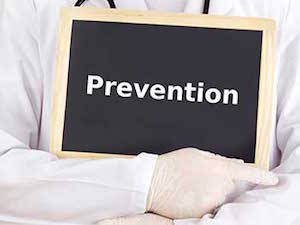legal resources necessary to hold negligent facilities accountable.
Prevention of Bed Sores in Nursing Homes
Steps for Preventing Bedsores

Preventing a bedsore is much easier than treating an existing one. However, a bedsore can still develop even when providing appropriate preventative care on a consistent basis. There are well-established protocols and strategies for providing care to patients with a high propensity of developing a bedsore at home, in a hospital or medical facility.
Bedsores PreventionBedsores (a.k.a. decubitus ulcers; pressure ulcers; pressure sores) are caused by compression of the skin, usually over bony prominences. These areas could include on the ankles, hipbones, tailbone, knees, ankles, elbows, shoulder blades, back of the head and other areas. The compression restricts adequate blood supply to tissue, which can begin to die from lack of oxygen within just a few hours.
Repositioning the individual is a key component to preventing the development of a bedsore. However, position changes need to happen frequently, to minimize any stress on the skin. In addition to repositioning the body to minimize pressure on highly susceptible areas, other effective strategies can help. This includes providing good nutrition and hydration, routine movement when possible, and smoking cessation (quit smoking).
Usually, the patients most susceptible to developing a decubitus ulcer are those challenged with mobility. This could include patients confined to a bed, wheelchair-bound due to a medical condition, paralysis or in a coma.
Steps for the Wheelchair-Bound to Prevent Pressure Wounds
Wheelchair-bound individuals need to be repositioned every 15 to 20 minutes. The following steps can help minimize the potential of developing pressure sores on the buttocks, tailbone, ankles, toes, heels or bottoms of the feet. The steps include:
Shift Weight Frequently – If the individual can shift their weight on their own, it is important to reposition the body every 15 minutes. When assistance is required, repositioning of the body should occur no less than once every hour.
Raise Up from the Seat – If the individual has sufficient upper body strength they will need to lift themselves up from the seat of the wheelchair. If possible, perform wheelchair push-ups to alleviate pressure on their buttocks and back of the thighs.
Use a Specialty Wheelchair – Some medical device companies manufacture where chairs with the ability to tilt to alleviate pressure.
Use Pressure Relieving Cushions – Using a cushion that alleviates pressure will ensure the body remains well-positioned while seated in the wheelchair. Some are air filled, water filled, or fabricated with gel or foam.
Wound Care Prevention Steps for the Bed Bound
Many individuals are confined to a bed for medical reasons. When possible, the patient needs to move about in the bed every 15 to 20 minutes. If self-propelled movement is not possible, assistance is crucial to preventing a bedsore. Consider the following steps:
Reposition Frequently – The patient’s body should be repositioned every two hours.
Use Available Medical Devices – Trapeze bars, slide sheets and other devices help lift the patient and reposition the body. These medical devices minimize shearing and friction on the skin which can easily tear tissue or create a pressure sore.
Use Specialized Mattresses – Utilizing a specialized mattress can alleviate much of the pressure on the back of the body. Some are water filled, air filled, foam or other material. Doctors can write a prescription for a specialized mattress for patients receiving treatment or being cared for at home.
Properly Adjust the Bed – Hospital beds are designed to elevate the head, to be positioned at an angle of 30 degrees or less to prevent shearing, or pulling skin until it tears.
In addition to repositioning and utilizing special devices, adequate nutrition and hydration are necessary to improve the health of the patient’s skin. Drinking enough liquid throughout the day helps keep the skin hydrated, and a healthy diet will provide necessary protein, minerals, vitamins and calories to support the immune system.
Neglect by Caregivers in Incorporating Wound Prevention Can Have Disasterous Consequences
Nearly every type of pressure sore is avoidable, especially when the health of the patient is being managed by healthcare providers at home and at a medical facility. When the decubitus ulcer is allowed to progress to advancing stages, it is often an indicator of neglect by the medical staff. Without proper care, a minor pressure ulcer can develop into a life-threatening condition.
Nursing Home Law Center LLC at (800) 926-7565 provide a free initial consultation to family members of victims suffering serious bedsores caused by the neglect of others. We can take legal action to stop the negligence immediately, and seek remedy for the damages involved. Our attorneys have a comprehensive understanding of Illinois elder law, and can offer a variety of legal options on how to best proceed to obtain financial recompense for the suffering your loved one has endured.
 Chicago Lawyer Nursing Home Law Center LLC Home
Chicago Lawyer Nursing Home Law Center LLC Home